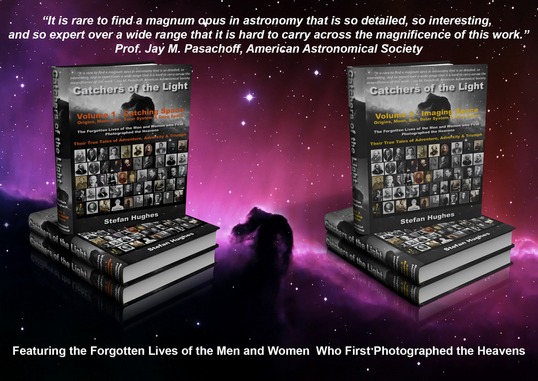'The Leviathan Man'

Born: 17th June 1800; York, Yorkshire, England
Died: 31st October 1867, Seapoint, Monkstown, Dublin, Ireland
William Parsons was the ‘Great Telescope’ Builder, whose 72-inch Reflector was for almost three quarters of a century the largest telescope in the world. He did something no one else had done before or since - create almost single handedly a telescope of such a size and use it to ‘afford us some insight into the construction of the material universe’.
He made drawings of Deep Space Objects (DSOs) which showed for the very first time what many of them truly looked like. It was he who first discovered with his ‘Leviathan of Parsonstown’ the ‘Spiral’ nature of certain nebulae.
William Parsons (1800-1867), the 3rd Earl of Rosse was born into an age when wealthy amateur scientists could and did make great contributions to our understanding of the universe in which we live.
He was the first of the great telescope builders who created almost single handedly a series of speculum metal mirrored reflectors of ever increasing size; beginning with a 6-inch in 1826, followed by a 15-inch in 1830, then soon afterwards by a 24-inch, which was then superseded in 1839 by a 36-inch; and finally in 1845 construction was completed on his famous 72-inch telescope - the ‘Leviathan of Parsonstown’. This telescope was to remain the largest telescope in the world for over 70 years until 1917 when it was ‘overtaken’ by the 100-inch Hooker Reflector at the Mount Wilson Observatory in California, USA.
Although William Parsons never used any of his telescopes to take photographs of the Deep Space Objects (DSOs) he observed, he nevertheless made vital discoveries regarding their structure. His drawings of DSOs made by him and his assistants at Birr Castle during the period 1845 to 1867, showed for the very first time accurate representations of their true appearance, later to be confirmed by the photographs of Isaac Roberts (1829-1904), William Edward Wilson (1851-1908), James Edward Keeler (1857-1900) and others.
Above all else, William Parsons demonstrated the great potential reflecting telescopes had in the future conduct of astronomical research. An opinion that was later to be proved correct. The age of telescope building at Birr in the years 1826 to 1845 marked the onset of the ‘death’ of the ‘Great Refractor’. However it was to be others who caused ‘its’ death; Andrew Ainslie Common dealt ‘it’ the fatal blow, and it was James Edward Keeler who put the nails in ‘its’ coffin.
In 1845 William Parsons began using his 72-inch Reflector and during the course of his observations noticed that a number of the bright ‘nebulae’ exhibited a definite spiral structure to them. The 3rd Earl of Rosse’s discovery of the spiral nature of certain nebulae helped fuel the flames of a long standing argument between himself and another great astronomer of the time – Sir John Herschel.
Rosse believed that all ‘nebulae’ were made up of individual stars, a fact which would become evident if telescopes of sufficient size were available to observe them; on the other hand Herschel believed that not all nebulae are ‘resolvable’ and some of them are made up of clouds of gas which collapse to form stars.
History has subsequently shown that both were right and both were wrong in equal measures! Certain nebulae are in fact made up of clouds of gas, some of which are even ‘star forming nurseries’; whilst others including Rosse’s ‘spirals’ were in fact external galaxies made up of individual stars, much resembling our own Milky Way; but situated millions of light years beyond the boundaries of our own ‘Island Universe’.
To read more on his life and work read the eBook chapter on William Parsons, 3rd Earl of Rosse or buy the Book 'Catchers of the Light'.

William Parsons' drawing of the famous 'Whirlpool' Nebula (M51) in Canes Venatici, 1845

Buy the eBook or Printed Book at the 'Catchers of the Light' shop.